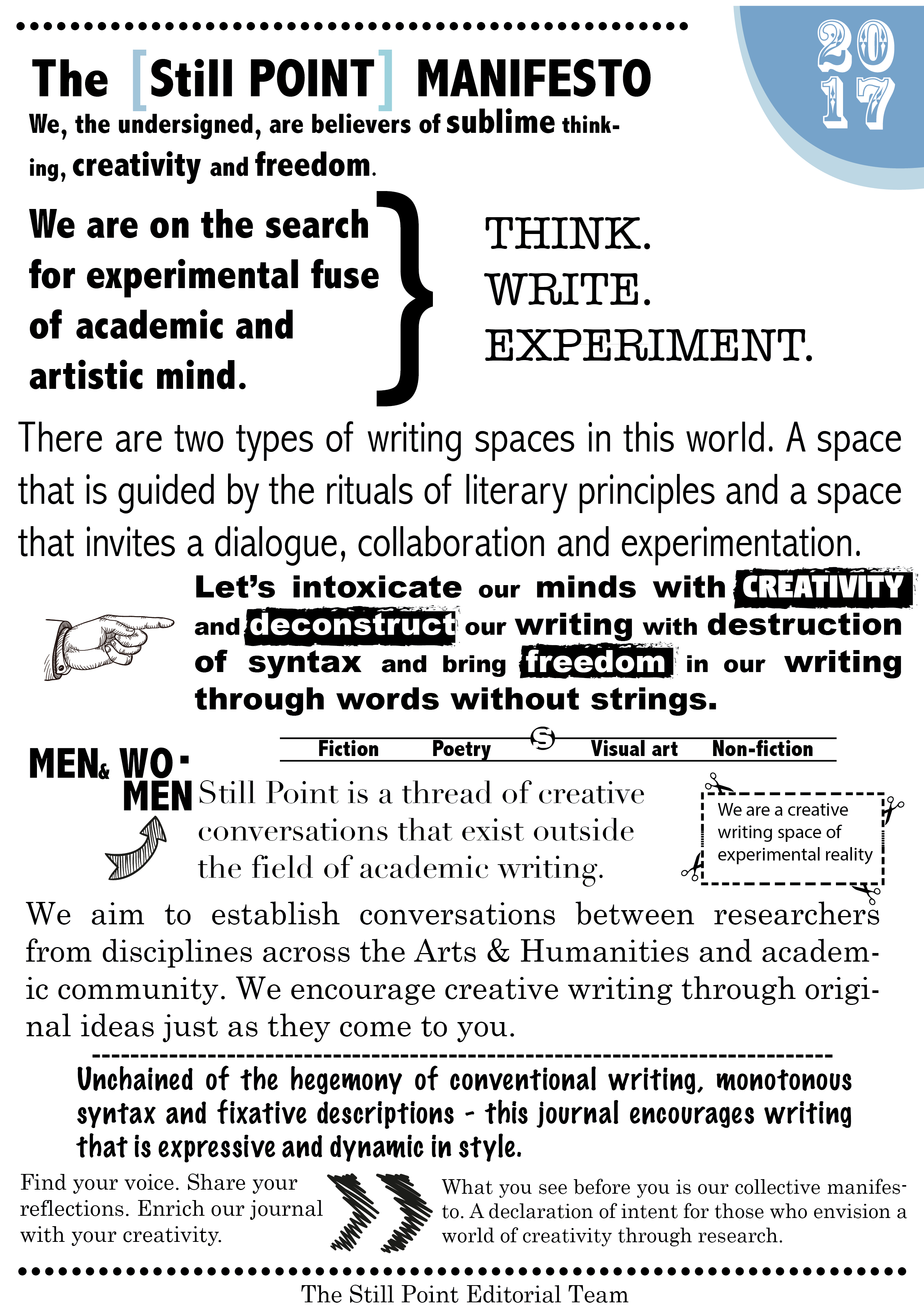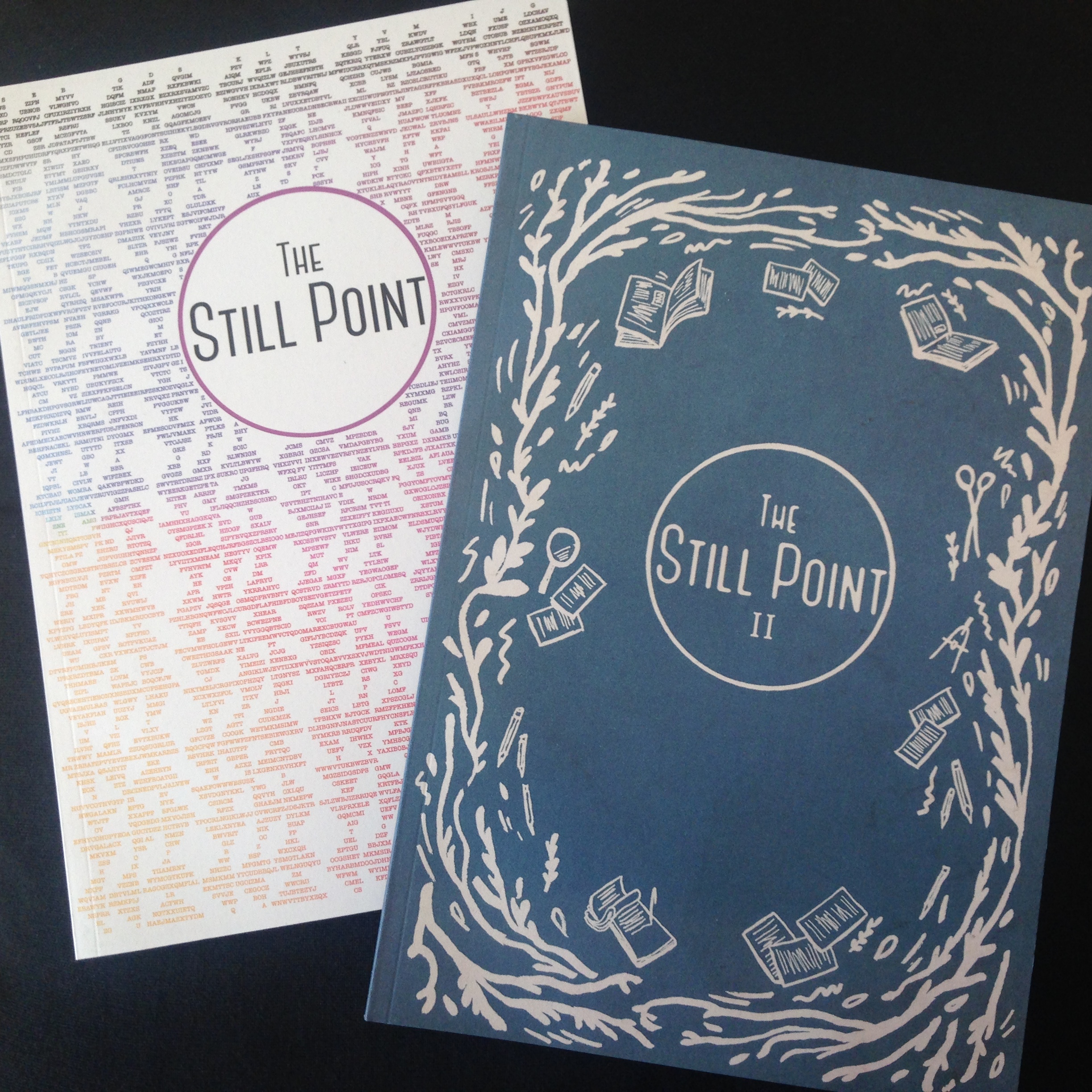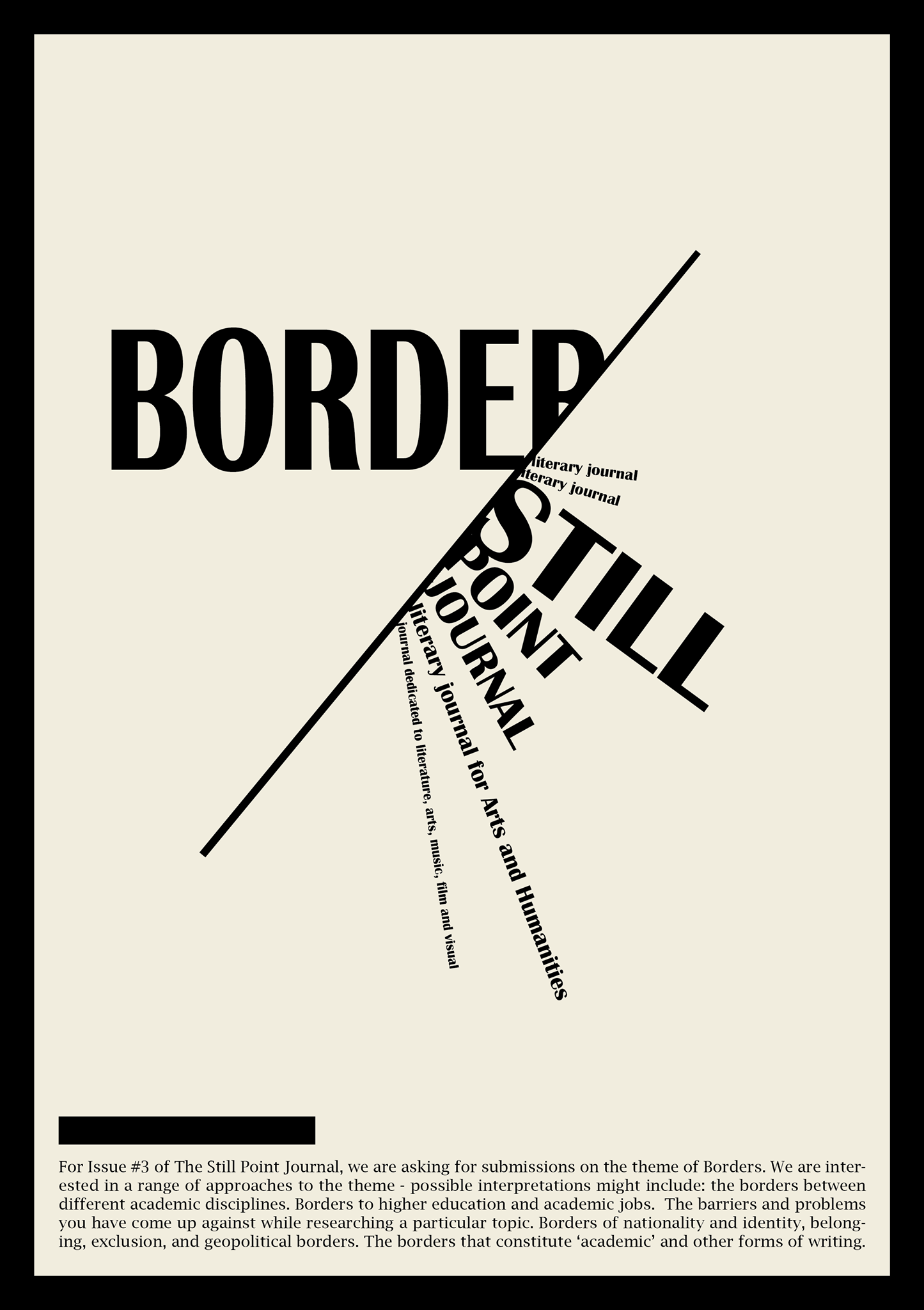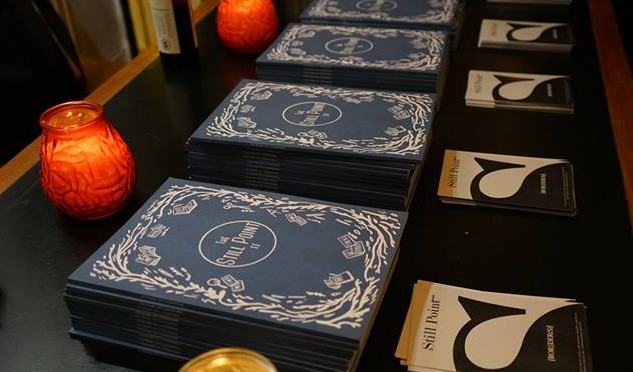Following the successful launch of The Still Point Issue 2, we speak with Mariam Zarif, editor-in-chief 2017-2018, about the new team’s vision for the journal. Mariam is a PhD researcher in the Department of English at King’s, writing on New Woman male writers as ‘transvestities’ and the politics of cross dressing in the fin de siècle. She heads up an editorial team composed of PhD researchers at King’s, UCL, Queen Mary, and the School of Advanced Study.
Find The Still Point Journal online, on Facebook and Twitter.

KE: Could you tell us a bit about The Still Point and how it was originally conceptualised? How is it different from other literary journals?
MZ: The Still Point is a medium that celebrates creative and innovative writing and research experiences. Founded by King’s English PhD researcher Francesca Brooks in 2015, the journal was designed to offer research students a space of ‘one’s own’, where they can reflect on their research experiences.
As researchers, our minds work in mysterious ways: spending an afternoon dwelling on our semicolons, regularising our syntax and often dressing a naked line with ‘intellectual’ words. Thus, everyone needs a ‘room of one’s own’ to reflect upon research encounters, which can be manifested through creative forms and styles. Between emotional or productive days, when we’re deep in an atmosphere of contemplation, we imagine that The Still Point is that moment, when our imaginations begin to experiment with creative forms.
What makes The Still Point distinctive as a journal and blog is the multiplicity of forms that we promote and our desire to bring together innumerable experiences of researchers.
KE: As a new editor of The Still Point, what is your vision for seeing the journal develop?
MZ: As the editor of The Still Point, I want to see the journal grow in all aspects of writing forms, including short stories, essays, poems and images that embody a sense of originality and the extraordinary. I invite researchers to write not as external contributors but as collaborators with The Still Point team.
Our vision is to create a vibrant space that gives voice to creative thoughts, a voice that is often displaced in our writing and strenuous reading over the course of our research. We want to be a destination for experimental writing that encapsulates both individual and collective research. We look to promote and encourage a culture of cross communication through creative work.

KE: What do you find the hardest about being an editor, and about working in a team?
MZ: The most challenging aspect of being an editor is ensuring that each piece is intellectually exciting, and maintaining the standard that readers expected. As an editor, you are always on the lookout for the next great piece of writing, which simultaneously helps develop your critical and professional knowledge. The editing skills, which you gain through this role, are beneficial, but of course time pressures and the editorial work dedicated to each piece are demanding.
Nevertheless, I get an opportunity to celebrate the researcher’s everyday experiences reflected in imaginative, expressive and perceptive responses. It also enables me to envision my research in a different perspective; for instance, I begin to structure my writing to articulate an effective and efficient argument.
Further, I see editing as a collaborative journey, in which an individual can endeavour to grow in various capacities and gain invaluable experience. Likewise, working with a team who share the same vigour and vision of making each individual piece a memorable reading experience is what makes The Still Point a marvel.
KE: How does the process of editing shape your own writing and research?
MZ: When I think of the process of editing, I cannot help but recall the image of an editor portrayed by a nineteenth-century writer and editor – Arnold Bennett:
‘I, who habitually think in articles, who exist by phrases; I, who seize life at the pen’s point and callously wrest from it the material which I torture into confections styled essays, short stories, novels, and plays; who perceive in passion chiefly a theme, and in tragedy chiefly a “situation”.’
Perhaps our own editorial experiences might not be as gruelling and strenuous as Bennett’s; nonetheless, the process of editing requires careful attention and extensive observation. Once the editorial tasks and responsibilities are fulfilled, I return to the world of research – sometimes alienating – in which the methods of editing the journal contributions provoke me to reflect upon my writing and convince me to write economically.
I’ve started to wonder if an editor becomes a counsellor of her own writing, working collaboratively with a past self to re-draft a piece without destroying it…

KE: How experimental do you think creative pieces can get within the remit of the journal?
MZ: As researchers, our writing is guarded by ‘sacred’ principles. Therefore, it seems natural to allow ‘complete’ freedom for experimenting with creative pieces. I believe that experimenting with writing is an essential part of research as it helps find the extraordinary in simple yet peculiar things.
The Still Point seeks to combine the traditional and the modern through literature and art. Working on creative pieces is a long process and occasionally unpredictable; nevertheless it is this uncertainty of the finished piece that creates a sense of thrill and sensation.
I would like the creative pieces in the journal to read like intimate conversations, reflecting each writer’s ‘streams of consciousness’, uninterrupted by conventional dialogue, footnotes, and bibliographies.
KE: Do you prefer the printed version of the journal, or a digital copy? How does materiality influence the way in which we read creative pieces?
MZ: In this modern age of digitalisation, our reading experiences of literature have transformed. The Still Point represents a transition in which a journal moves from being a material object for a small group of readers (we only have 500 copies of each physical issue!), to a digital space open to all who wish to explore dialogues between literature, visual arts and technology. The addition of the digital format has increased accessibility and availability of material for readers. However, for me the print version allows the text to form a specifically emotional relationship with the reader. It represents a collection of creative voices filling the blank pages, which encapsulates aesthetic value and evokes a sense of exclusiveness.
KE: How does The Still Point fit into London’s literary landscape?
MZ: London has always been the writer’s muse. Here, writers begin their journeys, sometimes in the raw afternoon, contemplating in a coffee shop, sometimes in the dense fog walking in the streets with no sense of direction, and sometimes haggard in the reading rooms of the British Library.
London represents an open platform, where writers from different institutions, disciplines, and cultures come together.
We can already witness the popularisation of creative writing in London through academic journals, researchers’ diaries, and blogs, including the Breathe Free Press, which celebrates ‘essayistic narratives’ on cross-genres, 5×5 Literary Magazine, which publishes creative writing through experimental styles and forms, and a recently established journal apt, which features short stories, essays and poetry in their annual print issue. Readers should also stand by for Moveable Type‘s new issue, put together by UCL researchers, coming soon!
On behalf of the whole editorial team, I invite researchers and writers to engage and participate in the culture of creative writing that we want to encourage with The Still Point print journal and blog.

The Still Point Journal is available online and in print, thanks to the generous support of the London Arts and Humanities Partnership/ LAHP (an AHRC Doctoral Training Centre).
The call for submissions for print Issue 3 is open until 22 May 2017 [edit – DEADLINE EXTENDED UNTIL 17 JULY 2017]. The theme is ‘Borders’, which PhD researchers are invited to interpret as broadly as possible.
The Still Point blog accepts submissions on a rolling basis, with monthly themes to inspire and provoke contributions.
You may also enjoy: Ruth Padel’s drafting process for ‘Capoeira Boy’.
Blog posts on King’s English represent the views of the individual authors and not those of the English Department, nor King’s College London.

